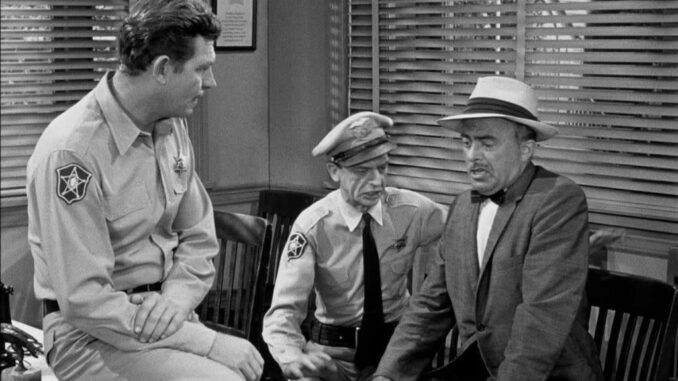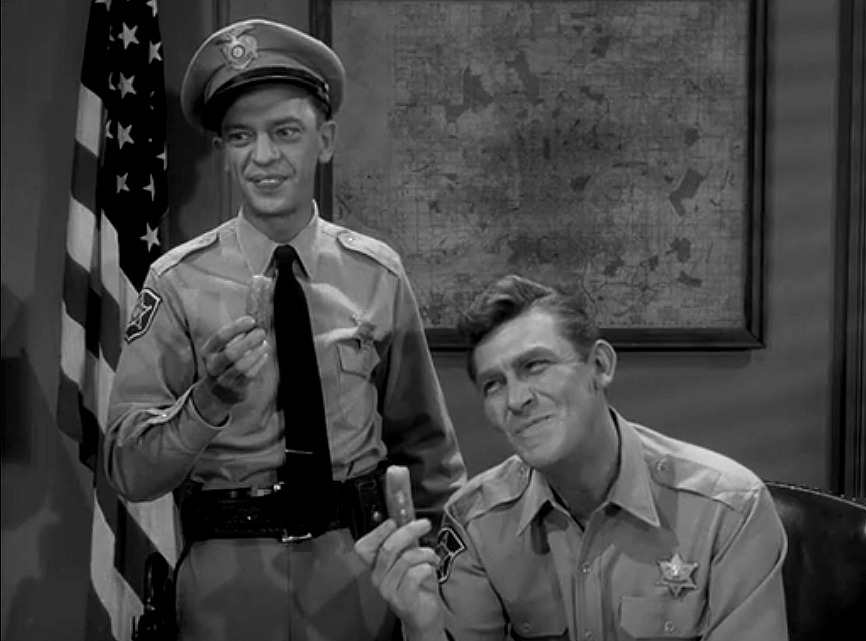
Introduction: A 1960s TV Gem That Still Shines Bright
When you think of classic television, The Andy Griffith Show probably pops into your head with a warm smile. The show, which aired from 1960 to 1968, became more than just a hit series—it became an American institution. But what was it, exactly, that made it stand out in a decade filled with groundbreaking shows? According to Andy Griffith himself, there was one special quality that set it apart from the rest.
Let’s take a stroll down to Mayberry and unpack what made this small-town sitcom larger than life.
The Heart of Mayberry: Simplicity in Storytelling
A Gentle Pace in a Fast-Changing World
In the 1960s, television audiences were adjusting to massive cultural changes—civil rights movements, political tensions, and shifting family dynamics. While many shows reflected these changes, The Andy Griffith Show did the opposite. Andy Griffith once said that the show stood apart because of its “gentle storytelling.” No high drama. No edgy shock value. Just life lessons and laughs in a slow-paced, idyllic town.
Why ‘Less’ Became ‘More’
Griffith believed that the secret was simplicity. Where other shows chased trends, The Andy Griffith Show leaned into timeless values—honesty, kindness, and neighborly love. The plots were straightforward, yet relatable. Think about it: how many times did Barney Fife’s antics lead to a teachable moment? It wasn’t about plot twists. It was about human connection.

Andy Griffith’s Vision: A Show About People, Not Problems
Avoiding the Hot-Button Issues
Unlike other 1960s programs that tackled controversial subjects head-on, Andy made a conscious choice to avoid politics, violence, and social commentary. Not because he didn’t care—but because he wanted to give viewers a break from it all. He envisioned Mayberry as a retreat, a sanctuary of sorts. Griffith often said, “It was about love.”
Emotional Truth Over Realism
The show wasn’t trying to be realistic—it was trying to be emotionally truthful. The characters felt real, even if the town was idealized. That emotional connection? That’s what made the audience come back week after week.
The Power of Relationships on the Show
Andy and Opie: A Father-Son Bond That Melted Hearts
One of the show’s strongest elements was the bond between Andy Taylor and his son, Opie. Their conversations were simple, often brief, but always packed with meaning. Ron Howard later said that Andy taught him more about life than most adults in Hollywood ever did.
Andy and Barney: Comedy with Compassion
Sure, Don Knotts’ performance as Barney Fife was a riot, but what made it stick was Andy’s constant patience. Their dynamic was full of heart. Andy knew Barney was a fool—but he loved him anyway. That kind of relationship was rare on television, then and now.
The Show’s Rural Appeal Wasn’t Just About Nostalgia
Capturing a Vanishing America
Griffith noted that Mayberry captured “a time and place that was already disappearing.” Post-WWII America was shifting fast. But Mayberry froze that old-school charm in time. The values weren’t just for laughs—they were a longing for something people feared they were losing.
Mayberry Was Everytown, USA
It didn’t matter where you lived—Mayberry felt familiar. The barbershop. The porch conversations. Aunt Bee’s fried chicken. Viewers weren’t just watching a show; they were visiting home.
Andy Griffith’s Influence Behind the Scenes
A Quiet Leader Who Shaped the Tone
Griffith wasn’t just the star—he had his fingerprints all over the show’s tone. He was instrumental in keeping the comedy grounded and the stories heartfelt. When things leaned too silly or sentimental, Andy reined them in. He once described his role as “keeping the car between the lines.”
Letting Other Characters Shine
Unlike many sitcom leads, Andy didn’t hog the spotlight. He often took the straight-man role so that others—especially Don Knotts—could shine. That generosity created balance. Viewers didn’t just love Andy; they loved Mayberry’s whole cast.
The Importance of Non-Verbal Storytelling
Body Language and Silence Spoke Volumes
Andy Griffith believed in subtlety. You could tell how Andy Taylor felt with just a glance. No need for dramatic speeches. A pat on Opie’s head or a quiet sigh often did the work.
Musical Cues and the Whistle Theme
That iconic whistling intro? It wasn’t just catchy. It was an emotional reset. It told you, “You’re safe here.” The music throughout the show followed the same rule—never too loud, always supporting the feeling.
Writing That Respected the Audience
Clever Humor Without Cruelty
One thing you’ll never find on The Andy Griffith Show? Mean-spirited jokes. The humor was clean, kind, and clever. Griffith believed the audience didn’t need crude punchlines to laugh. They needed warmth.
No Laugh Track Needed
Even when other sitcoms leaned on canned laughter, The Andy Griffith Show trusted its material. The humor wasn’t forced. It flowed naturally from situations and characters.
The Show’s Legacy Is Still Alive Today
Syndication and Streaming Keep Mayberry Going
Decades later, new generations are still discovering Mayberry. Whether it’s on MeTV or streaming platforms, the show continues to find fresh eyes—and hearts.
Lessons That Still Resonate
In an era of endless content, Andy Griffith’s message of kindness and simplicity remains a breath of fresh air. And that, more than anything, is what Andy believed made the show different. It wasn’t just entertainment—it was a place to rest your soul.
Conclusion: Andy Griffith Knew the Secret All Along
Andy Griffith wasn’t trying to change the world with his show. He was trying to reflect the best parts of it. In a noisy, divided decade, he gave us a small town where people listened, loved, and laughed together. That’s what set The Andy Griffith Show apart. Not just in the 1960s, but even now.
It was never about ratings, controversy, or staying on trend. It was about creating a feeling—a warm, familiar place where things just made sense. And that feeling? It still lives on in Mayberry.
5 Unique FAQs
1. What did Andy Griffith say was the key to the show’s success?
He believed the show’s “gentle storytelling” and emotional truth made it stand out. It wasn’t about drama or conflict—it was about love and simplicity.
2. Why didn’t the show tackle major social issues like other 1960s programs?
Andy intentionally steered clear of controversy to give viewers a peaceful escape from the turbulence of the real world.
3. Did Andy Griffith write episodes of the show himself?
While not officially credited as a writer, Andy was heavily involved in shaping scripts and guiding the show’s tone and message.
4. How did the relationship between Andy and Opie affect viewers?
It resonated deeply. Their warm, respectful bond reminded people of ideal parent-child relationships, often moving audiences to tears.
5. Is Mayberry based on a real place?
Yes, it was inspired by Andy’s hometown of Mount Airy, North Carolina—a real-life version of the fictional Mayberry we all came to love.
